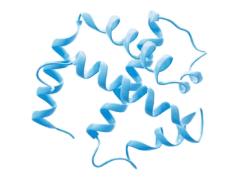Structural Proteins
Structural proteins are parts of cells or tissues that give shape, strength, or support. Think of collagen, elastin, keratin, cytoskeleton components—proteins that hold things together. Labs use recombinant structural proteins when making scaffolds, extracellular matrix models, or studying how cells interact with their physical environment. What labs care most about is correct folding, stability, and mechanical properties. If the protein mimics its natural form well, experiments are more meaningful and fewer artifacts show up.

VAng-Wyb6892-inquire
Recombinant Plasmodium Falciparum Tubulin beta chain Protein (aa 1-445) (Mammalian cel) (isolate K1 / Thailand)
Ask
VAng-Wyb6896-inquire
Recombinant Plasmodium Falciparum Tubulin beta chain Protein (aa 1-445) (Mammalian cel)
Ask
VAng-Wyb6384-inquire
Recombinant Plasmodium Falciparum Cofilin/actin-depolymerizing factor homolog 1 Protein (aa 1-122) (Mammalian cel)
Ask
VAng-Wyb6886-inquire
Recombinant Plasmodium Falciparum Tubulin alpha chain Protein (aa 1-453) (Mammalian cel)
Ask
VAng-Wyb6346-inquire
Recombinant Plasmodium Falciparum Actin-2 Protein (aa 1-376) (Mammalian cel)
Ask
VAng-Wyb6388-inquire
Recombinant Plasmodium Falciparum Cofilin/actin-depolymerizing factor homolog 2 Protein (aa 1-143) (Mammalian cel)
Ask
VAng-Wyb6341-inquire
Recombinant Plasmodium Falciparum Actin-1 Protein (aa 1-376) (Mammalian cel)
Ask
